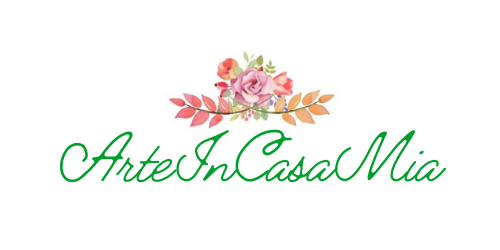Conditions
Techniques & Materials
Bead weaving, Biedermeier, Tsumami Kanzashi are just some of the techniques in which I have specialized and with which I make my creations, ranging from costume jewelery to decorative objects and accessories to make your look and that of your home more delicious.
BIEDERMEIER
This style was born in Austria and Germany between 1815 and 1848. It includes painting, literature, furniture and of course the art of decoration.
The period defined as "Biedermeier". begins with the crisis of Romanticism and celebrates the cult of small things that can make a house cosy. After the Congress of Vienna in 1815, which marked the end of a long period of wars, and after the upheavals of the Napoleonic era, there came a period of tranquillity in which people preferred a simpler lifestyle than the one they had led up to that point.It was at this time and for this reason that the first Biedermeier decorations were created.
Women used this style to make their homes more welcoming with compositions to hang on the walls, decorate hats and handbags and to give gifts for birthdays, Christmas, Easter, weddings and other occasions, since due to their importance and preciousness they were considered a wish for prosperity, wealth and good luck.The most commonly used materials were canutilla (gold or silver thread worked in a spiral), pearls, spices, berries of various kinds and silk flowers.
Here is a brief description of what it consists of: cinnamon, cloves, aniseed, coffee, seeds, pine cones, berries, coloured ribbons, lace, canutilla, flowers, pearls, beads, composed with taste and skill to perfume the home pleasantly and cheer it up with delicate colours, to make elegant wedding keepsakes, Christmas decorations, place cards and furnishing objects
TSUMAMI KANZASHI
Tsumami Kanzashi is an ancient Japanese technique used to make the ornaments - known as kanzashi - of traditional Japanese women's hairstyles.They were introduced when the traditional hairstyle, taregami, with long, loose hair, was abandoned and hairstyles were based on the gathered hair.
They became popular during the Edo period (1603-1868), during which craftsmen began to produce increasingly refined and elegant types made from the most varied materials such as gold, silver, jade, tortoise shells and silk.
They are worn in particular by brides, those who habitually wear kimonos, such as geishas, tayu and yujo, or those who participate in tea ceremonies and practice ikebana.
Recently, there has been a rediscovery of kanzashi among young Japanese women, who even wear them with their suits. Particularly popular are the flower-shaped ones made of silk, satin or other types of fabric that give the creation an effect of lightness and elegance and allow a truly varied use.
The ancient decorative technique of the Rising Sun, through original reinterpretations and adaptations, can be used to create, with a little imagination, decorations for objects, clothing and accessories, and even highly refined costume jewellery.
BEAD WEAVING
The peyote technique of bead weaving has its ancient origins in the American Indian people. It seems that the peyote technique was used by Indian craftsmen to produce ornamental decorations, such as bags, bracelets, necklaces, various jewellery, pipe covers and other objects that were mainly used as ornaments for the traditional peyote ceremony.
This craft technique known simply as "peyote" or "peyote stitch" is a technique of weaving beads by hand, with needle and thread, without the aid of a loom or other machinery. The beads come in various sizes, made as small cylindrical tubes, all perfectly identical in a wide range of colours. They can also be used together with Conteria or Rocailles beads, the latter being round in shape, also in various sizes and colours.
Working with peyote beads requires knowledge of Swarovski weaving and familiarity with bead weaving in general. The peyote stitch lends itself to endless combinations, both with other techniques (herringbone, ladder, etc.) and with various materials such as Swarovski, semi-precious stones (Cabochon), objects of various nature and shape. In addition, you learn to blend, combine and mix materials, colours and techniques, creating jewellery that is modern but has an ancient, ethnic and mysterious feel.
The most important accessories, in addition to beads and various materials (beads or stones), are: long, flexible needles, scissors, flat nose pliers, round nose pliers, wire cutters and, of course, nylon thread.
If used with precision and diligence it can produce jewellery of rare beauty, bracelets, necklaces, earrings and other objects that are always original and much appreciated.
Cross stitch
Cross stitch is an embroidery technique carried out on textured fabrics of various types. It is used to create bags for ceremonies, household linen, layette accessories, curtains, tablecloths, paintings and as an ornament on personal or furnishing accessories. Cross-stitch embroidery is very old, it seems to have been used by primitive men to sew animal skins for cover. However, the real history of cross stitch began in the Middle Ages, influenced by the rich Persian embroidery. In the period between 900 and 1200 in Europe, cross-stitch embroidery was carried out by the ladies of a castle who copied designs from the oriental ones by embroidering on linen cloth using silk or wool threads. In the Renaissance, cross-stitching was one of the bases of female education. Girls and young women mainly embroidered letters, numbers and religious symbols that were widely used to decorate sleeves, hems of dresses and sacred ornaments. Between 1500 and 1700 came the first printed patterns with floral, animal and landscape motifs. It was in the 1800s that cross-stitching became more sought-after, as brides' trousseaus began to be made. In 1900, due to the struggles for women's emancipation, embroidery was rejected by women who considered it frustrating, but fortunately, in the 1980s, this beautiful embroidery technique was re-evaluated and practised as a pastime with the creation of various and multicoloured designs.

